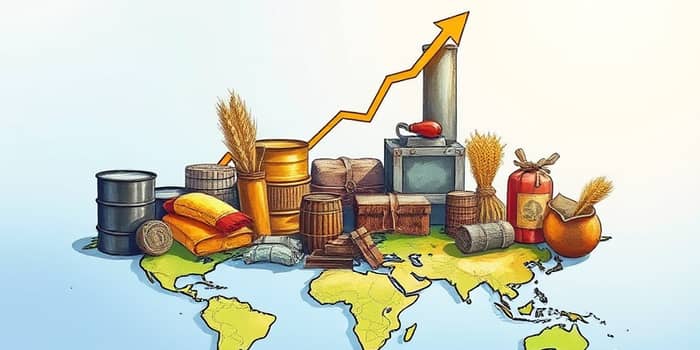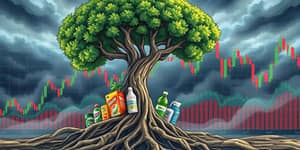
The commodity markets have endured intense volatility since the pandemic, with sharp downturns between 2023 and early 2025. Yet recent indicators suggest a renewed rebound, offering hope for producers, consumers, and investors alike. Understanding the forces at play can help stakeholders navigate the evolving landscape and capitalize on emerging opportunities.
Between 2023 and 2025, global commodity prices experienced their steepest declines in over a decade. A combination of factors drove this correction:
These headwinds led to forecasts of a 12% drop in overall commodity prices in 2025 and a further 5% decline in 2026, though levels remain higher in nominal terms than before the pandemic.
The rebound is uneven across commodity classes. Energy, metals, fertilizers and agriculture each tell a different story:
Notably, Brent crude is projected at around $64 per barrel in 2025 and $60 in 2026, down substantially from 2024 averages.
After such corrections, several catalysts are aligning to support a price recovery:
Market sentiment often overshoots on both sides: downturns create undervalued conditions, while optimism fuels rapid rebounds.
China, the world’s largest commodity consumer, plays a pivotal role. A sustained slowdown without fresh stimulus can weigh on prices, while targeted infrastructure spending or property market support could ignite demand. In contrast, the United States remains a supply powerhouse, with record LNG exports and shale production.
OPEC+ decisions still resonate globally. Its initial cut of 2.2 million barrels per day from late 2023 is set to unwind, adding another variable to the energy mix. Meanwhile, Africa’s growing agricultural investment and aid programs are reshaping the food supply landscape, potentially tightening global grain markets.
Inflation remains a double-edged sword. Commodities traditionally excel in rising price environments, but high inflation erodes consumer purchasing power and can prompt policy tightening that dampens demand.
Whether you are a producer, investor or end-user, these approaches can help manage risk and seize opportunities:
Long-term contracts and flexible supply agreements can also provide stability amid volatility.
Looking ahead, price trajectories hinge on several key variables:
1. Policy shifts: Tariffs, sanctions or fresh stimulus packages could dramatically alter demand-supply balances.
2. Geopolitical tensions: Renewed conflicts or diplomatic breakthroughs will influence energy and metal flows.
3. Technological transformation: Electric vehicle adoption surpassing 40% in markets like China dampens oil demand growth, while green hydrogen and battery metals gain prominence.
4. Climate and extreme weather: Crop yields and agricultural supply chains face mounting risks as weather patterns grow more erratic.
While forecasts predict a nominal 17% premium over 2015–19 levels by 2026, inflation-adjusted values could slip below that average for the first time. This duality underscores the importance of context when making strategic decisions.
Commodity markets are inherently cyclical, swinging from exuberant peaks to corrective troughs. The recent downturns may have been steep, but they have also reset the stage for a meaningful recovery. By understanding the underlying drivers, sector-specific nuances, and regional dynamics, stakeholders can make informed decisions and position themselves to benefit from the next upswing.
As the world economy adjusts to new supply realities, policy environments, and consumer trends, adaptability and vigilance will be key. Armed with robust strategies, market participants can navigate volatility with confidence and capture the opportunities that lie ahead.
References













